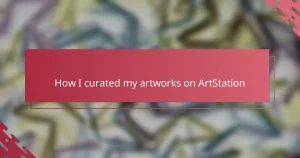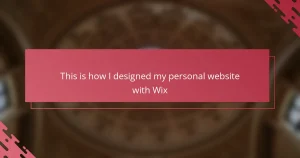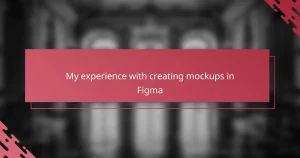Key takeaways
- An illustrator portfolio is a curated collection of the best artwork, showcasing an artist’s unique style and skills, and should prioritize quality over quantity.
- Using platforms like Coroflot offers a clean, professional layout and fosters a community for feedback and opportunities, making portfolio management easier.
- Organizing designs by theme or medium enhances storytelling, while a clean layout and consistent sizing improve viewer engagement.
- Regularly revisiting and rearranging a portfolio keeps it fresh and reflective of an artist’s evolving style and story.
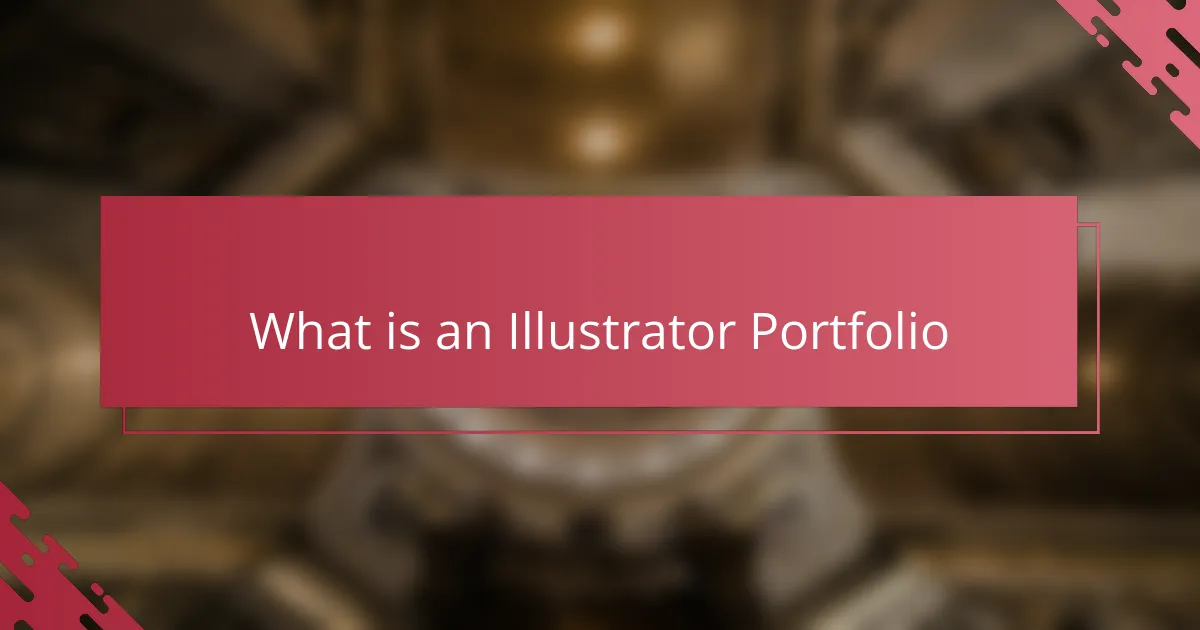
What Is An Illustrator Portfolio
An illustrator portfolio is essentially a curated collection of your best artwork that showcases your unique style and skills. From my experience, it’s like the visual resume that speaks for you when you’re not in the room, reflecting both your creativity and versatility. Have you ever thought about how a few carefully chosen pieces can tell a story about who you are as an artist?
I remember feeling overwhelmed at first when putting mine together—I struggled to decide which illustrations truly represented my capabilities. But I quickly realized that quality mattered far more than quantity; a portfolio should highlight your strongest work rather than everything you have ever created. It’s a personal narrative told through images, inviting clients and collaborators into your creative world.
An illustrator’s portfolio is also a constantly evolving tool. As I grow and experiment with new techniques, my portfolio changes to mirror my artistic journey. Isn’t it fascinating how this dynamic collection can open doors and create opportunities just by sharing your passion?
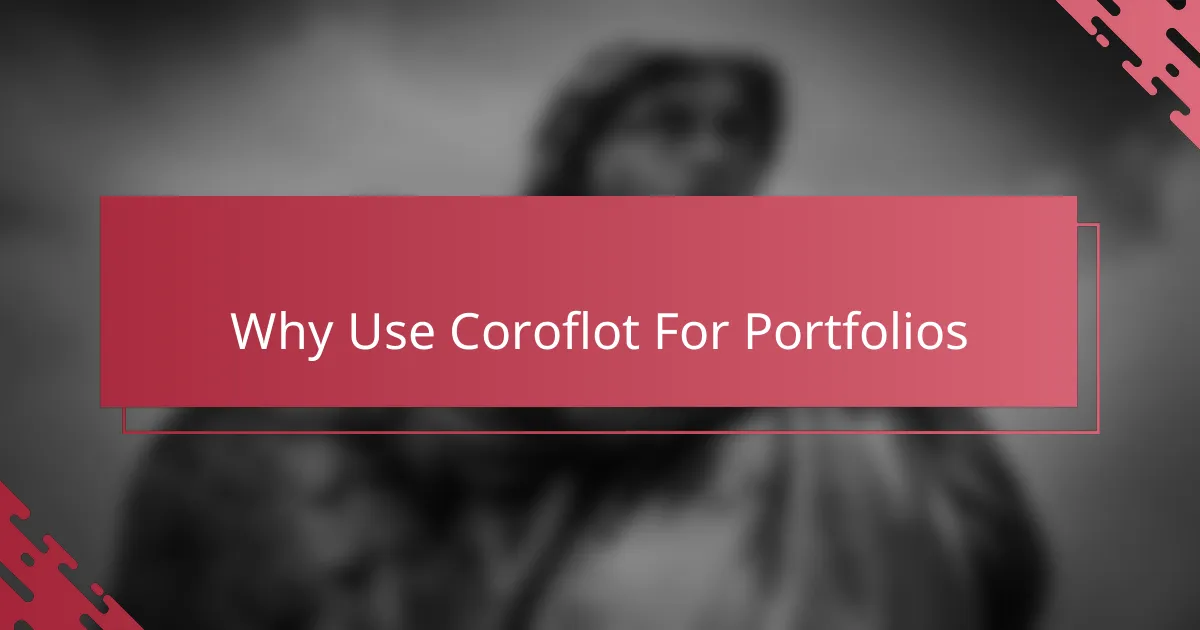
Why Use Coroflot For Portfolios
What drew me to Coroflot was how it balances visibility with simplicity. Unlike some other platforms, Coroflot feels straightforward but professional—it lets my work shine without overwhelming viewers. Have you ever visited a portfolio site that feels cluttered or too flashy? Coroflot avoids that pitfall by focusing purely on the art.
Another thing I appreciate is the community aspect. Coroflot connects you not just to potential clients, but to other creatives who understand the value of good design. It’s comforting to know that your portfolio isn’t just floating in cyberspace; it’s part of an active network where opportunities and feedback naturally arise. That sense of belonging really encouraged me to keep updating my work.
Lastly, the way Coroflot handles categorization made organizing my pieces so much easier. I was able to group projects by style, medium, or client, which gave my portfolio a clean flow. Isn’t it satisfying when your work is presented exactly how you envision it? To me, that kind of control is priceless when you’re trying to make a strong first impression.
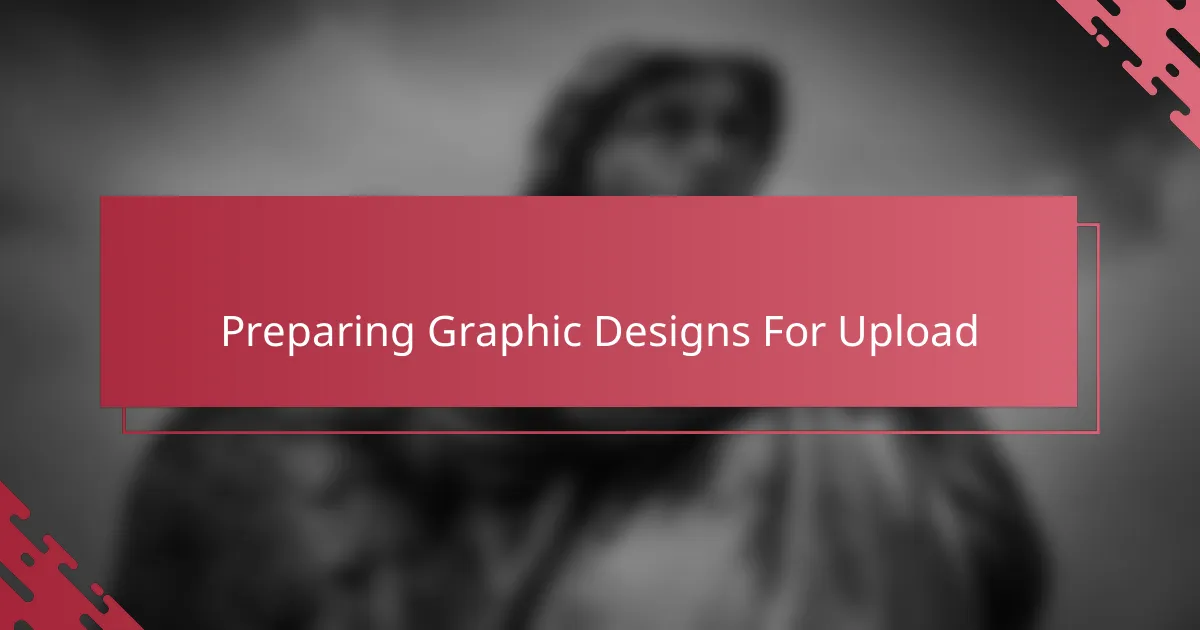
Preparing Graphic Designs For Upload
Before uploading my graphic designs to Coroflot, I always make sure each file is polished and properly sized. It’s amazing how a crisp, well-prepared image can make a huge difference in how my work is perceived. Have you ever uploaded a design only to realize later that the resolution was off or the colors didn’t quite match? That’s why I take the time to double-check these details—it saves me from those frustrating “oops” moments.
I also like to organize my designs into clear categories beforehand, which makes the uploading process smoother. When my files are neatly labeled by project or style, it’s easier to keep everything consistent and professional. This step might seem small, but honestly, it helps me feel more in control and confident as I showcase my work.
Finally, I add thoughtful titles and brief descriptions to each design before uploading. From experience, these little details invite viewers to connect with my creative process and understand the story behind each piece. Don’t you think a bit of context can turn a simple image into something memorable? That’s always been my goal with preparing my designs for Coroflot.
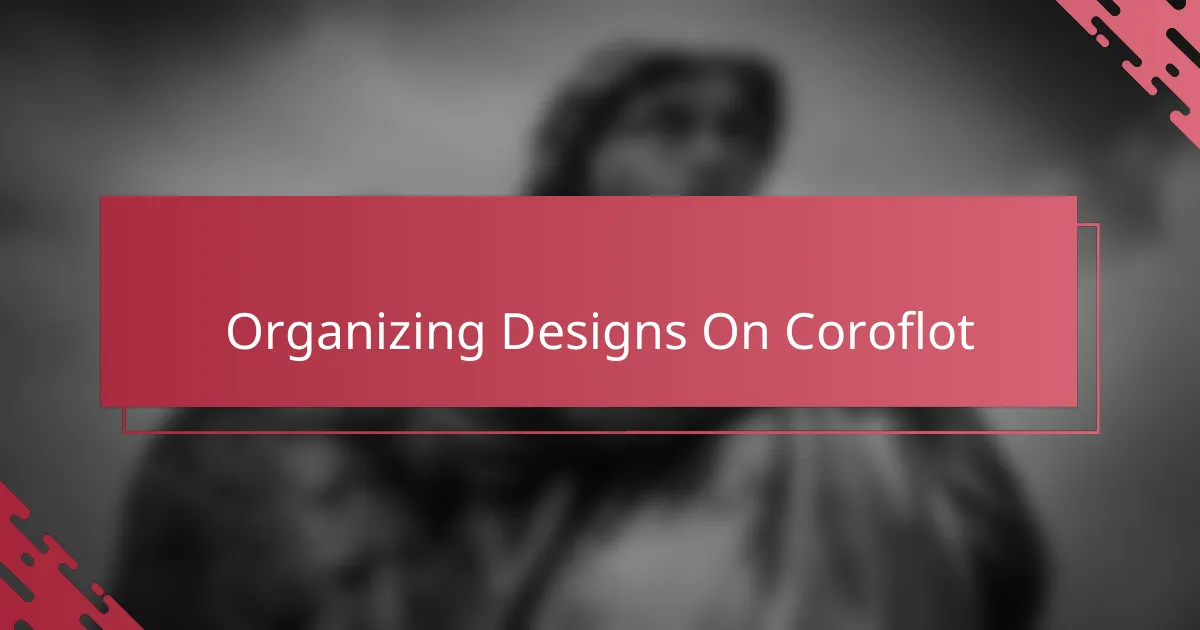
Organizing Designs On Coroflot
When I first started organizing my designs on Coroflot, I realized that grouping projects by theme or medium made a world of difference. It wasn’t just about tidiness; it helped me tell a clearer story through my portfolio. Have you noticed how a well-organized gallery invites viewers to explore more deeply? That’s exactly the feeling I wanted to create.
I also found that using Coroflot’s tagging and categorization tools gave me a sense of control over how my work appeared. It felt empowering to decide what order pieces should appear in, almost like curating a mini-exhibition. Sometimes, rearranging a few designs changed the entire vibe of my portfolio—it’s amazing how layout impacts perception.
Another thing I keep in mind is balancing variety with cohesion. While I want to showcase different styles, I make sure each section flows naturally to the next without confusing viewers. Isn’t it frustrating when portfolios feel disjointed? Organizing my designs thoughtfully on Coroflot helped me avoid that, making both browsing and presentation a much smoother experience.
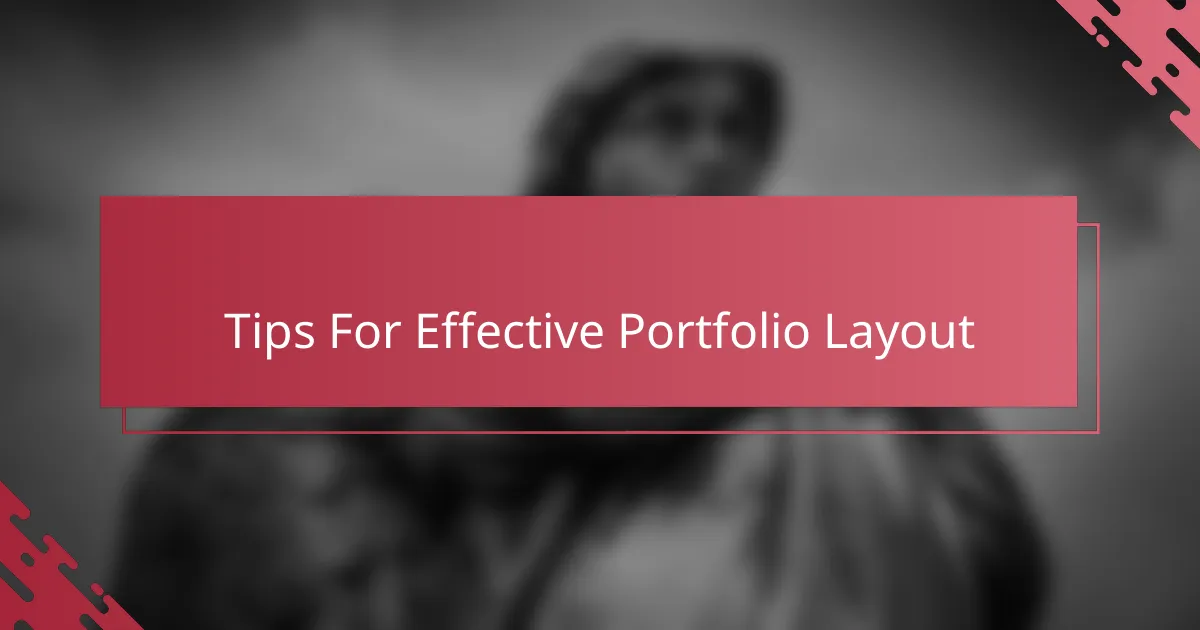
Tips For Effective Portfolio Layout
One tip I swear by is keeping the layout clean and uncluttered. When I see portfolios packed with too many designs crammed together, it’s hard to focus on any one piece. Don’t you find that white space actually gives your work room to breathe and lets each illustration stand out? That simplicity makes a huge difference in how viewers experience your portfolio.
I also learned that consistency in sizing and alignment really ties everything together visually. Early on, I would upload images in all sorts of sizes and orientations, which made my page look chaotic. Now, by sticking to a uniform grid or format, my designs feel like parts of a cohesive story, making it easier for clients to navigate and appreciate my style.
Finally, I recommend starting with your strongest pieces at the front—think of it as leading with your best story. I used to scatter my favorites throughout, but I noticed visitors often only glance quickly at the first few images. Have you tried arranging your work so that the first impression hooks the viewer? That focused strategy helped me capture attention right away and kept people scrolling for more.
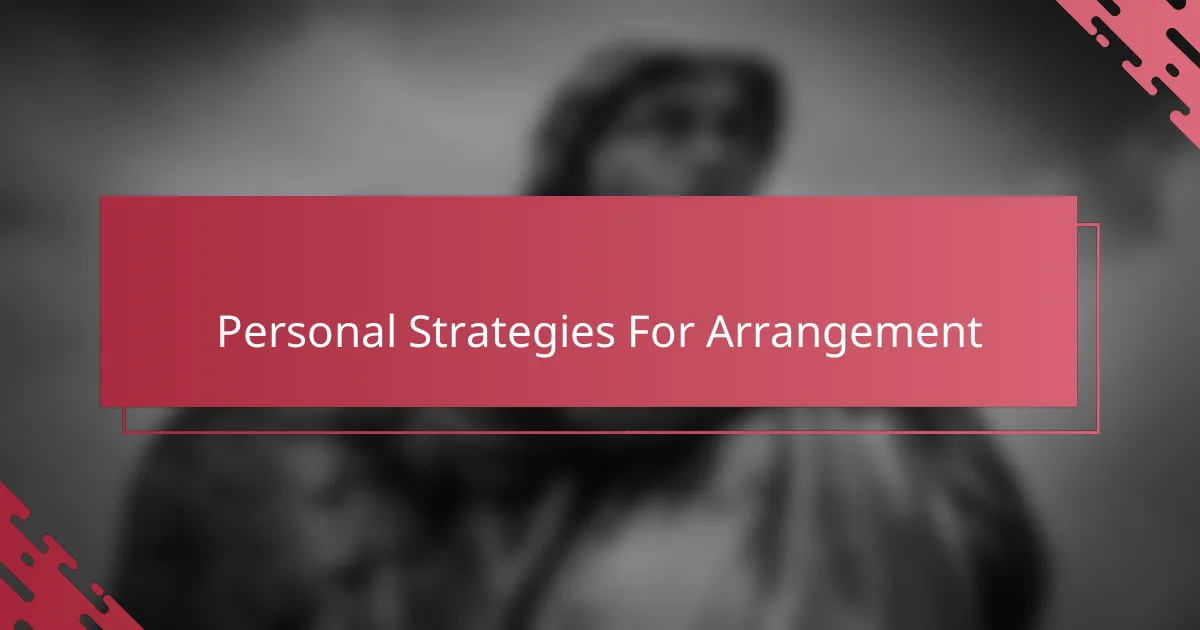
Personal Strategies For Arrangement
When it comes to arranging my graphic designs on Coroflot, I rely heavily on grouping projects that share a similar mood or narrative. This approach helps me create a journey for visitors, rather than just a random collection of images. Have you ever felt drawn into a portfolio because the pieces felt connected? That’s the kind of experience I want to offer.
I also prioritize clarity above all else. I learned early on that if my portfolio feels cluttered or confusing, viewers quickly lose interest. That’s why I take time to space out my designs thoughtfully and use clear, descriptive labels. It might seem simple, but this strategy keeps me grounded—it’s like telling my story in a way that anyone can follow.
Lastly, I make sure to revisit and rearrange my portfolio regularly. Sometimes, changing the order of just a few images can completely refresh how my work feels. Isn’t it amazing how small tweaks can create a new rhythm or mood? This ongoing process keeps me engaged and lets my portfolio evolve alongside my artistic growth.
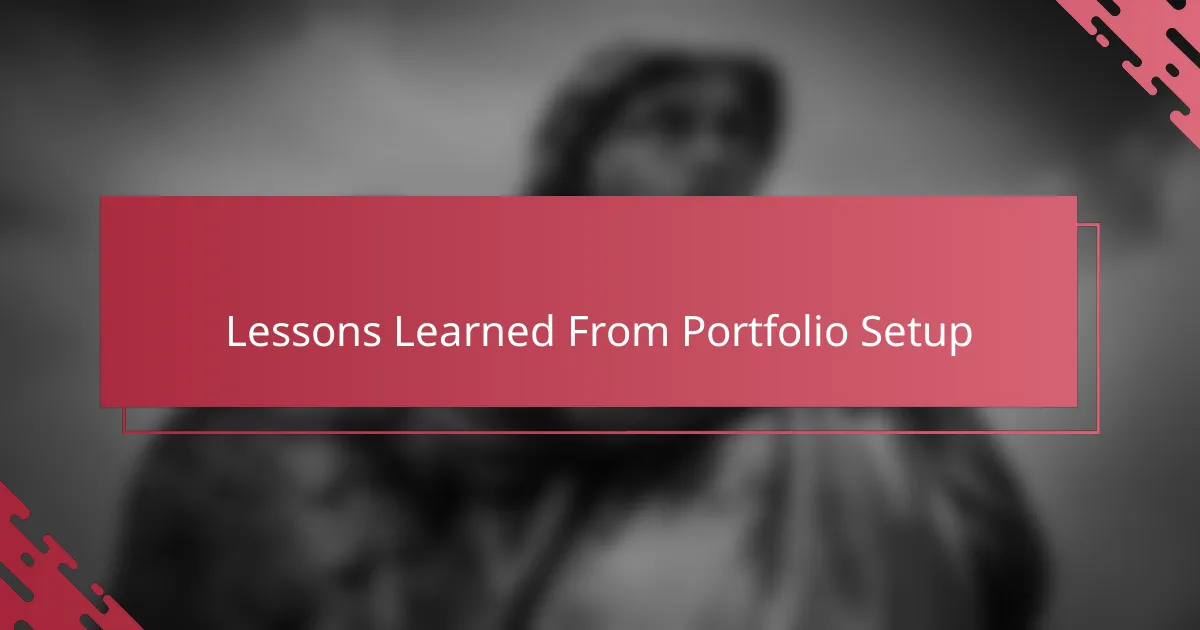
Lessons Learned From Portfolio Setup
One lesson that really stuck with me was how important it is to keep the portfolio focused and intentional. Early on, I was tempted to include every piece I was proud of, but I soon realized that less truly is more. Have you ever felt overwhelmed by too many options? Narrowing down my work made the overall presentation clearer and more impactful.
I also learned that patience is key when setting up a portfolio on Coroflot. It took me multiple rounds of tweaking layout, titles, and categories before I felt satisfied. Sometimes, I even questioned if my changes made a difference. But looking back, those small adjustments really shaped how my story appears to viewers.
Finally, I found that considering the viewer’s experience changed everything. Instead of focusing solely on what I wanted to showcase, I thought about how someone new to my work would navigate it. Isn’t that shift in perspective subtle but powerful? It helped me create a portfolio that invites exploration rather than confusion.
